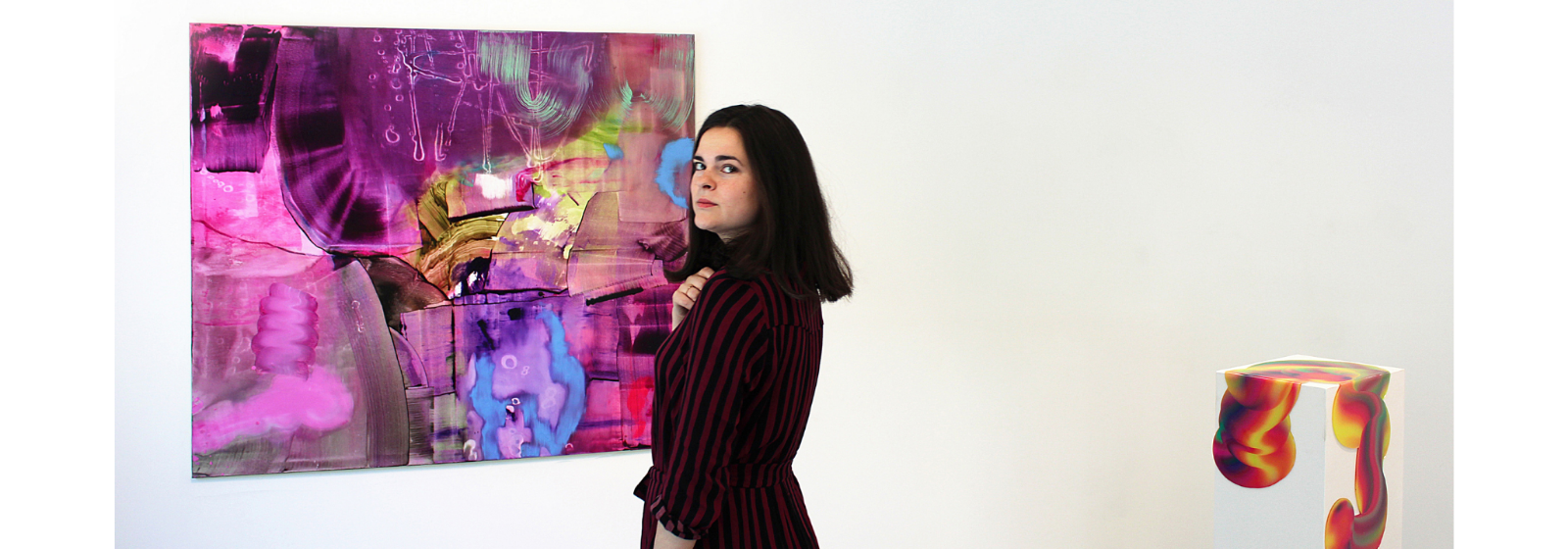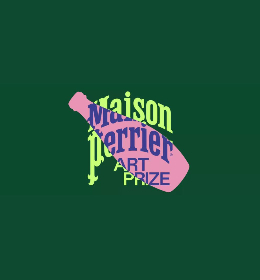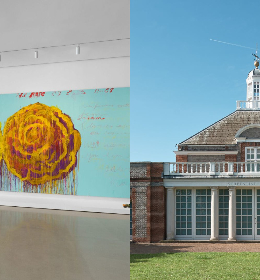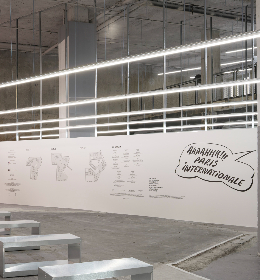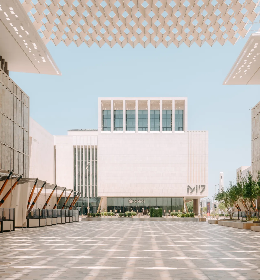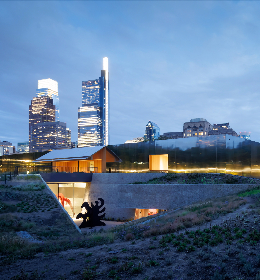I was curious about her work after seeing it in an exhibition at Viltin Gallery in Budapest this fall in a show entitled Versus. It was a two person show with Orsolya Lia Vető and Katja Pál’s works interacting in a strobing pattern of alternate realities, completely different and distinct from one another in concept, intention, and visual representation. I took the initiative to contact Vető and interview her about her current and past works via email.
Vető’s work resonates a direct and long journey of art history with references building one on top of another, a relationship much akin to the process of building a doctoral thesis on the foundations and strata of academics, both honing and redistributing information, while inseminating it with one’s own ideologies. This cross pollination of sorts from her prior flower paintings to the more abstract images created recently, builds on contemporary semiotics and the animation or attribution of agency to forms, which are non-human.
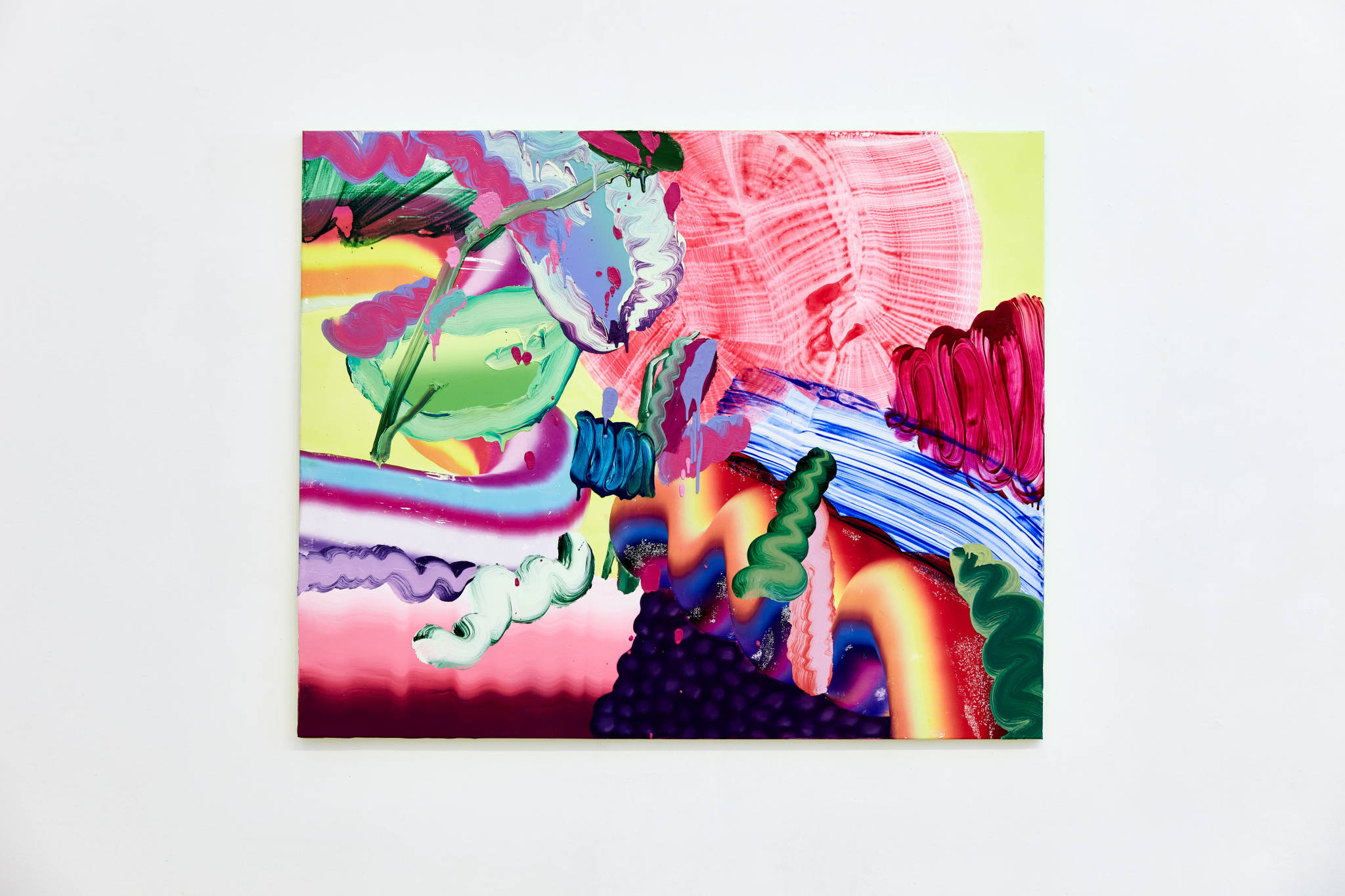
Orsolya Lia Vető, Biophilia (17PDL) 2020, acrylic, oil, digital transfer, 90 x 110 cm, photo by Dávid Biró - courtesy of the artist and Viltin Gallery
Her paintings assemble strokes and textures as symbols in themselves, as signs of art-making rather than words, each indicating a whole movement, a set of understood methodologies, paths, histories connecting to specific points in time and geography. Sometimes she uses paint, and sometimes the images are created with decal materials, a fixed digitized impression of a brushstroke created, to be stuck directly onto the surface. She describes this as a “constellation of acrylic, oil, and digital transfer.”
The implication is a brushstroke that is trapped in its own uniqueness, as if a flower, with its own brilliance, separate, contained, reflected and disseminating light from its colorful being. It leaves a bizarre after-effect with the assembly of forms. One knows that the works are both pasted together and painted; the sense of individuality and the equal level of importance given to each part is unseemly, creating an unsettling feeling to the viewer as the eye jumps around the canvas in a delight of color relationships much like the visual chemistry found in a candy shop filled with saturated confectionary. At times, some forms do dare to overlap. There are subtle transparencies, but they are not so transformative as to leave the prior paths unrecognizable, but more transparent overlaps, as water fixed and frozen in form compiled over another form.
Vető describes her own references to color: “Sometimes a color completely captivates me. One of my series, Heliopurpur, is named after a certain type of light purple pigment. I liked the growl-like nature of the word, and of course, the color’s gleaming beauty.”
Her forms do take on animal movement, squirmy swirling paint as caterpillars before their time in the chrysalis or the electric lights of glow worms inching about the canvas.
“Painting is a profoundly human, ancient rite, which is connected to tactility and to being intertwined through our bodily experience with different materials,” explains Vető. Indeed one can feel the paint here, almost taste it as if it is the saccharine frosting of a birthday cake that one can almost dip a finger into.
Vető extrapolates further to place her own work in context: “Of course, I am aware of the discourses concerning the continuous renegotiations of the definition of painting, its many deaths and its current theoretical dilemmas. However, my urge to paint is primal. For me, painting is the act of smearing materials of different consistency on to a surface. It is a kind of alchemy, which unfolds through highly concentrated painterly decisions. The fine-tuned modifications of the physical attributes of the artworks – the density of the paint, the smoothness of the surface, the amount of solvents and other chemicals, etc. – render the process of painting to become an endless, enchanting exploration.”
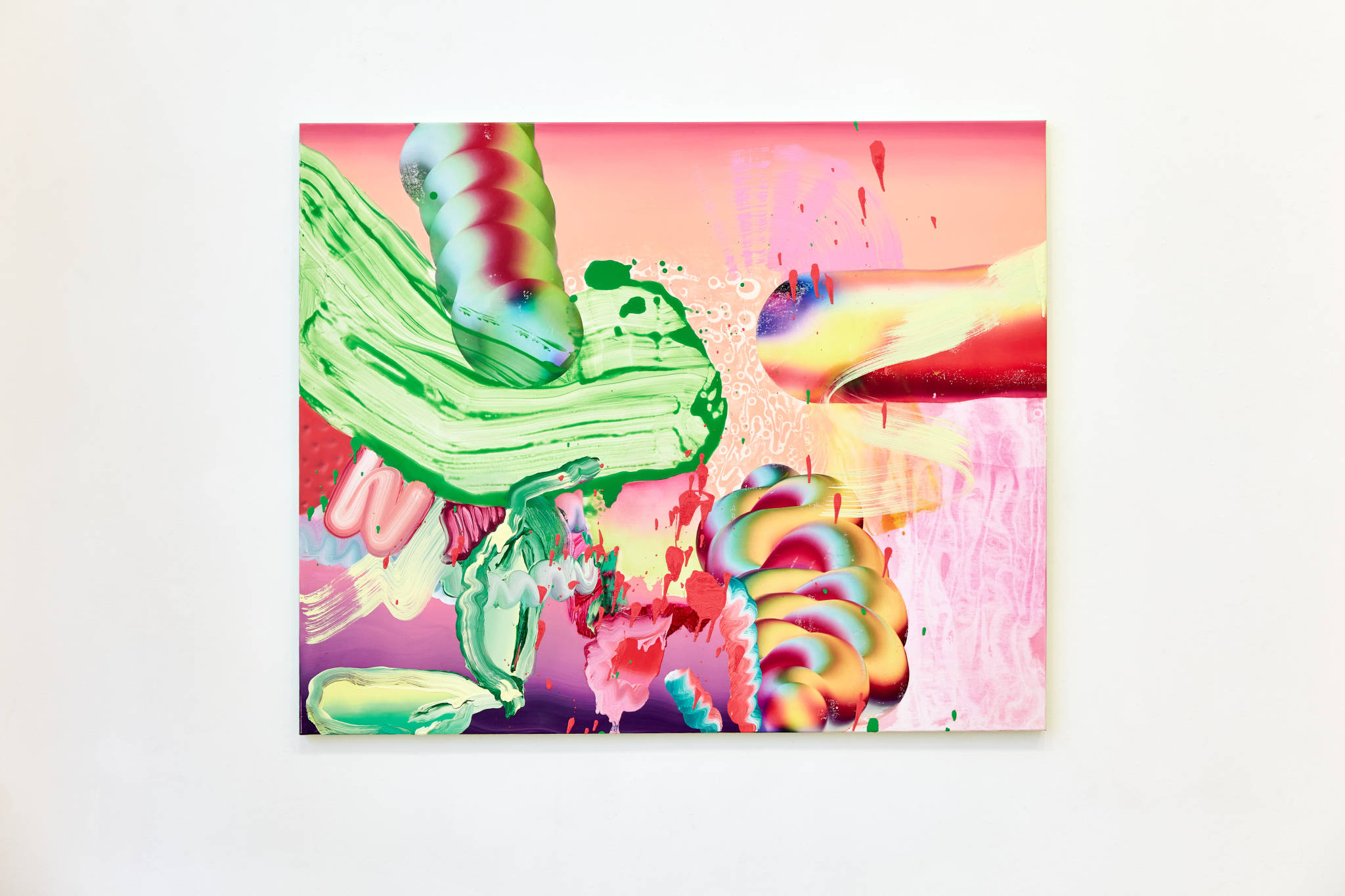
Orsolya Lia Vető, Biophilia (15PDL) 2020 acrylic, oil, digital transfer, 90 x 100 cm, photo by Dávid Biró - courtesy of the artist and Viltin Gallery
Her works resonate with me in terms of a viscerality, a lively playfulness as living beings, as if plants decided to form themselves in new sequences and structures through paint. It reminded me of long days watching my plants grow in my own studio through the spring lockdown earlier this year, their leaves unfolding in the light in twisting and unexpected forms.
“I think about my series of paintings titled Plantscape (2014 –) as the starting point, from which my latest work unfolds. At the moment, however, I am working with a somewhat different strategy. I focus more intensely on the medium itself, and I don’t rely on a materially present visual trigger, like flowers in the case of my earlier series. I concentrate on the physical attributes of paint’s self-forming capabilities and the sensual transformations of the brushstrokes I create. These marks turn into quasi-living beings which preserve a preverbal, sensual and enigmatic layer of meaning,” explains Vető of her series Biophilia.
A scholar herself, her doctoral work is defined by what Vető describes as, “the complex relationship between mark-making, the subject and material: more precisely the way paint becomes encrypted with a huge amount of personal data. I am intrigued by the phase when the painted gesture ceases to function as a subordinated, indexical sign and appears as an autonomous motif defining the picture plane. The shift between confined and localized signs to animate, entity-like brushstrokes, with distinct personalities and behavioral patterns is what I am looking for.”
Her unique approach to the layering of gestural signs in digital transfers is a defining feature of her insight into contemporary visual language. Vető explains her process and its impact: “The act of including transferred, digitally scripted gestures is interesting for me because of the way it relates to the conceptual layering of my paintings. I create the digital traces on the touchpad of my computer. The computer records the precise movement of my fingertips, taking the performance of my gesture and transcribing it through its technical apparatus. Due to the software, a perfect sign appears on the monitor, which I then transfer to the textile, applying – quite traditionally really – paint to the canvas.”
This gestural and performative nature with which she generates the work, becomes a private performance similar to the whole body movements of abstract expressionists of the past, only for her, these are but a stroke of the finger, a subtle and smooth passing of a single digit upon a computer which is captured and registered, then printed and applied in a digital transfer technique.

Orsolya Lia Vető, Heliopurpur (5PDL) 2018, acrylic, oil, 90 x 100 cm, photo by Dávid Biró - courtesy of the artist and Viltin Gallery
“The process of transferring the digital brushstroke to the fabric creates certain adhesive glitches, which helps these gestures in inhabiting the otherwise organic, oil paint-dominated environments. Through this process, I rematerialize my initially virtually mediated gesture and let the unique aspects of the interaction between the various materials emerge. I think about my digital “noodles” as cyborgian versions of the traditional brushstroke. The act of incorporating the perfect, smooth gradients of digital imagery into an oil-on-canvas situation is an exciting negotiation process which sometimes results in seamless harmony, but can also create enticingly jarring contrasts. The weirdest and most inspiring moment for me is when the digital sign becomes organic,” says Vető.
Her eloquent and symphonic explanation of her process and its application, redefines expressionism into a contemporary movement, a restoration of the aura in art as described by Walter Benjamin, a return of touch to digital production.
Anne Murray




